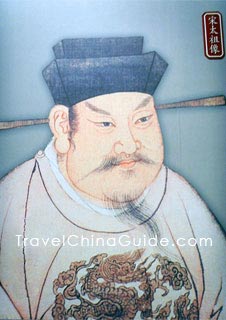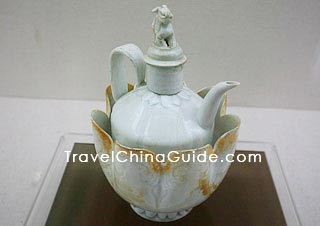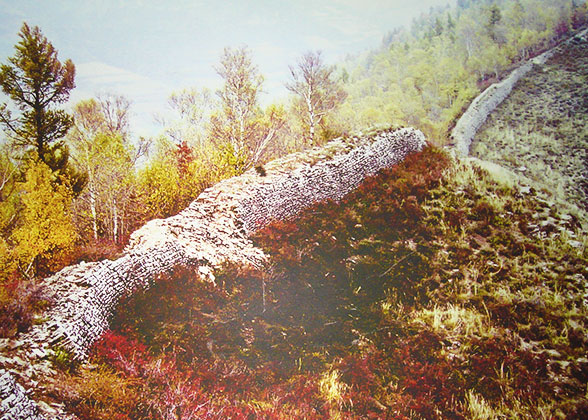Establishment
 |
Zhao Kuangyin,
the first emperor
of Northern Song Dynasty |
In 960, a military general of the Latter Zhou Dynasty (951 - 960) named Zhao Kuangyin launched a mutiny in Chenqiao County. After forcing the last emperor of the Latter Zhou to yield the throne, he established the Northern Song Dynasty in
Kaifeng (the provincial capital of Henan Province). Zhao Kuangyin became Emperor Taizu, the first emperor of the Song Dynasty. In the first two decades, Emperor Taizu and his brother Emperor Taizong put down the chaos of the ten states and unified most of the territory of China.
Development
In the early period, society and politics were both stable. Soon after the founding of the new dynasty, Emperor Taizu removed military power from the hands of the Jiedushi (regional military governors) consolidating the military leadership and placing it under the control of the emperor. From then on, a rather centralized state power was formed. Due to the policy of 'viewing literacy as more important than the military', a class of civil officials including some eminent poets, such as Su Dongpo and Fan Zhongyan were appointed in the court. During the reign of Emperor Renzong, the economic and social development reached the zenith.
Science and Culture
To some extent, the development of science, culture, and art during this period was as advanced as that of the Tang Dynasty (618 - 907).
 |
| Porcelain, Northern Song Dynasty |
In science, the world's earliest typography was invented by a man named Bi Sheng. In addition, gunpowder was first applied to military affairs. As for literature, the 'ci' poem, a new expressive form of Chinese ancient literature, became another gem of Chinese ancient culture along with Tang poetry. In the arts, the painting of the Northern Song reached a very high artistic level. The famous painting called Riverside Scene at Qingming Festival was drawn by the great painter Zhang Zeduan during this period.
Decline
During the reign of Emperor Shenzong, a great talent named Wang Anshi was appointed as Zaixiang (the prime minister in the Song Dynasty). In order to improve the old political system, he twice introduced a series of new policies, but both times it was in vain
because of obstruction from conservative forces. During that period, political corruption along with the invasion of external tribes forced the Northern Song court into decline.
 |
Ruins of Song Great Wall
in Kelan County, Shanxi |
In the late Northern Song, numerous civilian uprisings broke out. Among them, the Fangla Uprising in Zhejiang and the Liangshanpo Uprising in Shandong were two influential rebellions that greatly weakened the regime.
Downfall
In 1125, the Northern Song court was invaded by the army of the Jin Dynasty (1115 - 1234). With weak military strength, Emperor Huizong was not able to withstand the fierce attack of the Jin army and had to flee the capital city. At the last moment, the Northern Song army rallied and was able to resist the enemy. However, the weak and incompetent rulers of the Northern Song tried to make peace with the Jin court by killing some loyal chancellors. Finally, in 1127, the Jin army captured the Northern Song capital of Kaifeng, ending the Dynasty.
- Last updated on Aug. 09, 2022 -


